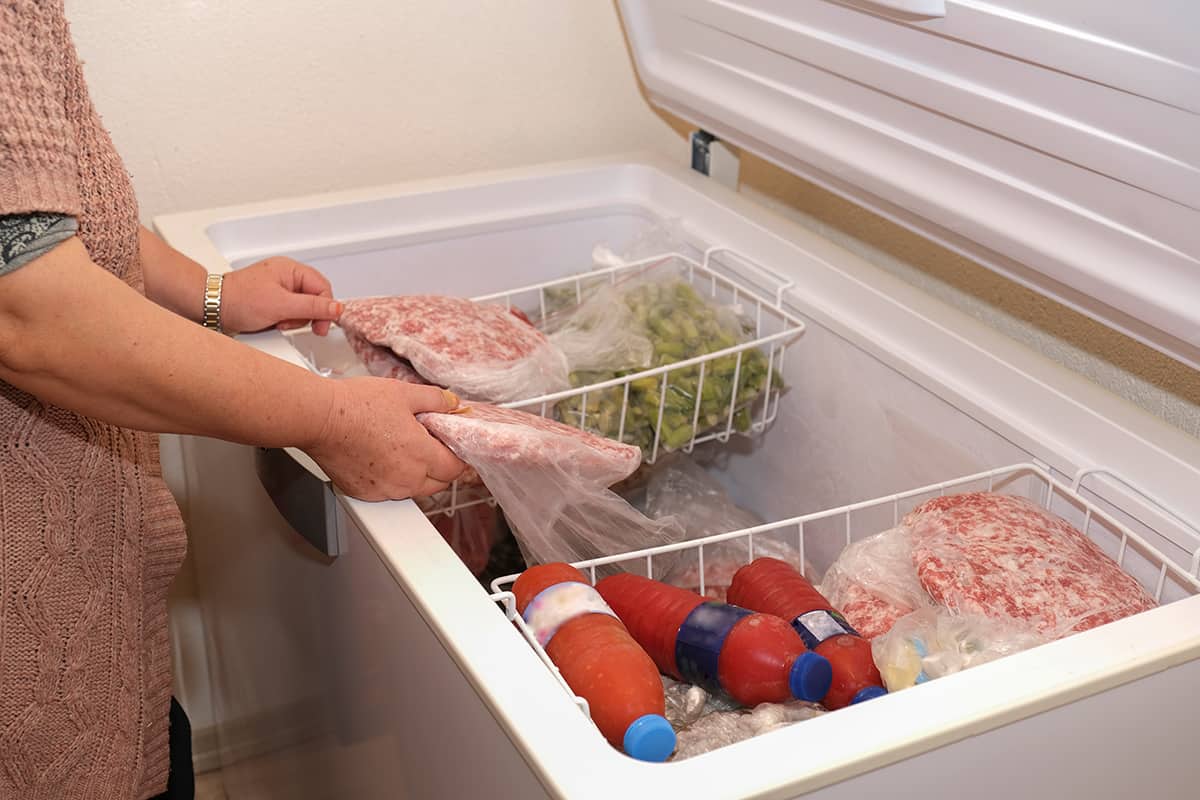The ideal temperature for a chest freezer is 0°F (-18°C). This ensures food stays frozen and safe for long-term storage.
Maintaining the correct temperature in your chest freezer is crucial for food safety and preservation. At 0°F (-18°C), bacteria growth is minimized, keeping your food fresh for extended periods. A consistent temperature ensures that meats, vegetables, and other perishables retain their nutritional value and taste.
Regularly monitoring your freezer’s temperature can help avoid spoilage and waste. Investing in a reliable thermometer allows for easy and accurate temperature checks. By setting your chest freezer to the optimal temperature, you can efficiently manage your food storage and reduce the risk of foodborne illnesses.

Credit: www.youtube.com
Optimal Temperature Range
The best temperature for a chest freezer is 0°F (-18°C). This keeps food safe and fresh. Bacteria can’t grow at this low temperature. Ice cream stays firm and vegetables don’t spoil. Always check the freezer’s temperature with a thermometer. Adjust settings if needed to maintain 0°F (-18°C).
Chest freezers should have steady temperatures. Fluctuations can spoil food. Opening the freezer too often can cause temperature changes. Ensure the freezer door seals tightly. A full freezer stays colder longer than a half-empty one. Keep the freezer away from heat sources.
Factors Affecting Temperature
The external environment can impact the temperature inside the chest freezer. Warm rooms can make the freezer work harder. Cold rooms can also affect it. Always place the freezer in a stable temperature area. Avoid direct sunlight or near heat sources. These actions help maintain the right temperature.
How much food you store affects the temperature. Overloading the freezer can block air circulation. This can make the freezer less efficient. On the other hand, an almost empty freezer works harder to keep items cold. Always keep it moderately filled. This ensures the best performance.
Energy Efficiency
Chest freezers use less energy than upright freezers. They have thicker insulation. This helps keep the cold inside. Always keep the lid closed. This saves energy and keeps food frozen.
Using a chest freezer can save money. A lower temperature setting is more efficient. This means the freezer uses less power. Less power use means lower electricity bills. Keep the freezer full to save energy. Frozen items help keep the freezer cold.
Setting The Temperature
Adjusting the thermostat is important. The ideal temperature for a chest freezer is 0°F (-18°C). Turn the dial to change the temperature. Each number on the dial represents a different temperature setting. Check the manual for exact settings. Use a thermometer to verify the temperature. Place the thermometer inside the freezer. Leave it for a few hours to get an accurate reading. Make small adjustments until the temperature is right.
Digital controls make setting the temperature easier. Press the buttons to set the desired temperature. The display shows the current temperature. Digital models are more precise than manual ones. Look for a display showing 0°F (-18°C). If the temperature is too high, adjust it lower. If too low, raise it slightly. Check the freezer regularly to ensure it stays at the set temperature.
Temperature Monitoring
Thermometers help check the freezer temperature. They are simple tools. Place a thermometer in the freezer. Wait for a few hours. Check the reading. The reading should be at least 0 degrees Fahrenheit. This keeps food safe. It stops bacteria from growing. Digital thermometers are easy to read. They show the temperature on a screen. Some beep if the temperature is too high.
Smart sensors are advanced tools. They connect to your smartphone. Get alerts if the temperature changes. This helps keep the freezer at the right temperature. Install the sensor inside the freezer. Connect it to your phone. Check the temperature anytime. Smart sensors can send warnings. They help maintain safe food storage.

Credit: stellablogs.hashnode.dev
Common Issues
Frost buildup in a chest freezer can cause many problems. It can reduce the storage space and make it hard to find food. Frost can also make the freezer use more energy. This leads to higher electricity bills. To avoid frost buildup, keep the door closed as much as possible. Make sure the door seals tightly. Check the seal regularly to ensure it is in good condition.
Inconsistent cooling can spoil food. It might be too warm or too cold in different parts of the freezer. This can happen if the freezer is too full. Air needs to flow freely for even cooling. Ensure the vents are not blocked. Clean the condenser coils to improve cooling performance. Regular maintenance helps keep the freezer running smoothly.
Maintenance Tips
Ice can build up in chest freezers. Thick ice makes the freezer work harder. Defrosting helps keep it running well. Turn off the freezer and remove all food. Let the ice melt. Clean the inside with warm water and soap. Dry it well before turning it back on. Regular defrosting saves energy and keeps food fresh.
Coils help the freezer stay cool. Dust and dirt can block them. Clean the coils every six months. Use a vacuum or a coil brush. Unplug the freezer first. Find the coils at the back or bottom. Remove dust gently. Clean coils help the freezer run smoothly and use less power.
Safety Considerations
Chest freezers should be set to 0°F (-18°C). This temperature keeps food safe. Bacteria cannot grow at this temperature. Always use a thermometer to check the temperature.
Keep the freezer door closed during power outages. A full freezer can keep food safe for 48 hours. A half-full freezer can keep food safe for 24 hours. Check the temperature as soon as power is back.

Credit: www.reddit.com
Conclusion
Maintaining the right chest freezer temperature is vital for food safety. Aim for 0°F (-18°C) to keep items frozen. Regularly check the thermostat and keep the freezer well-organized. Proper temperature settings ensure longer shelf life and reduce energy consumption. Follow these tips to make the most of your chest freezer.
